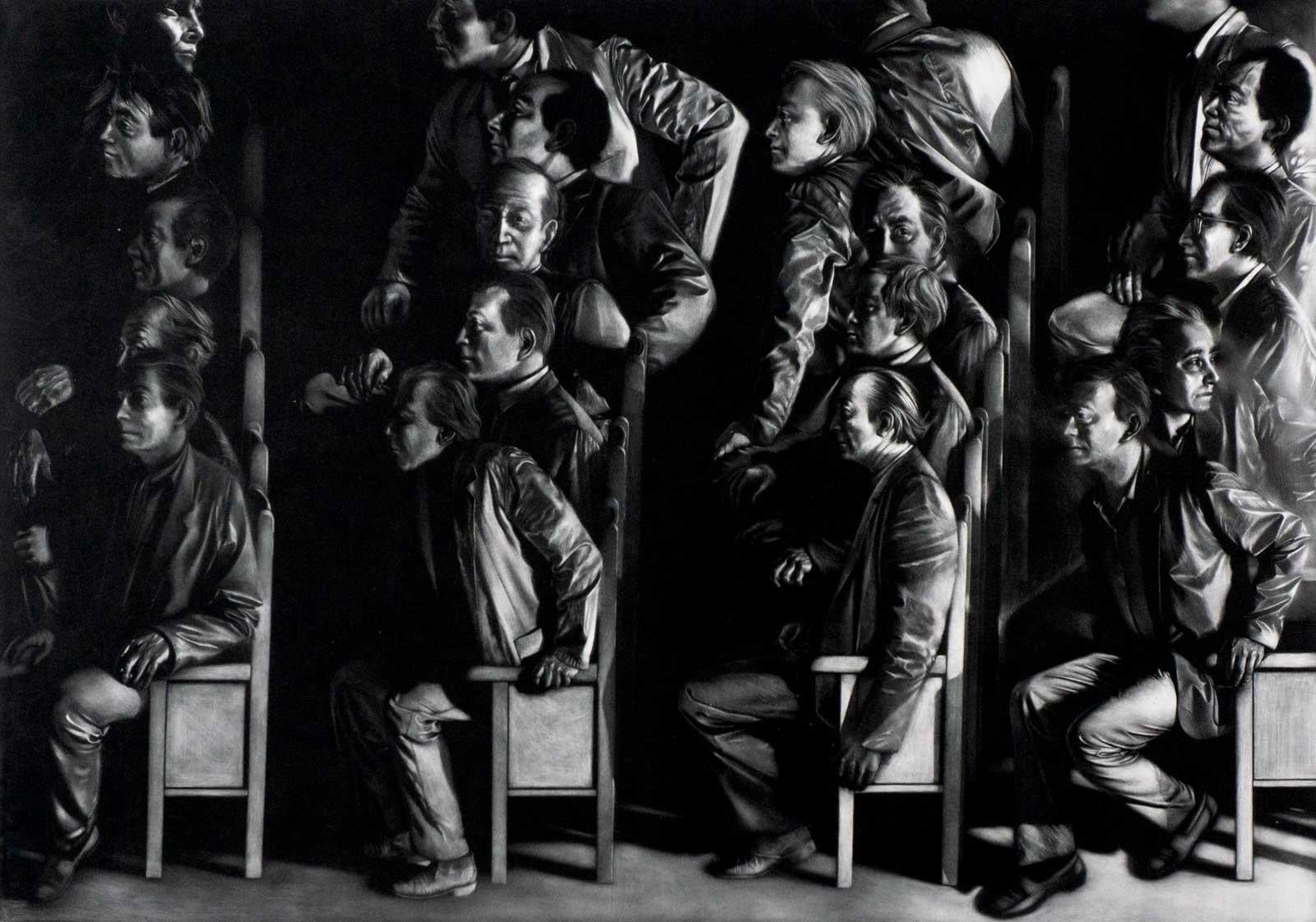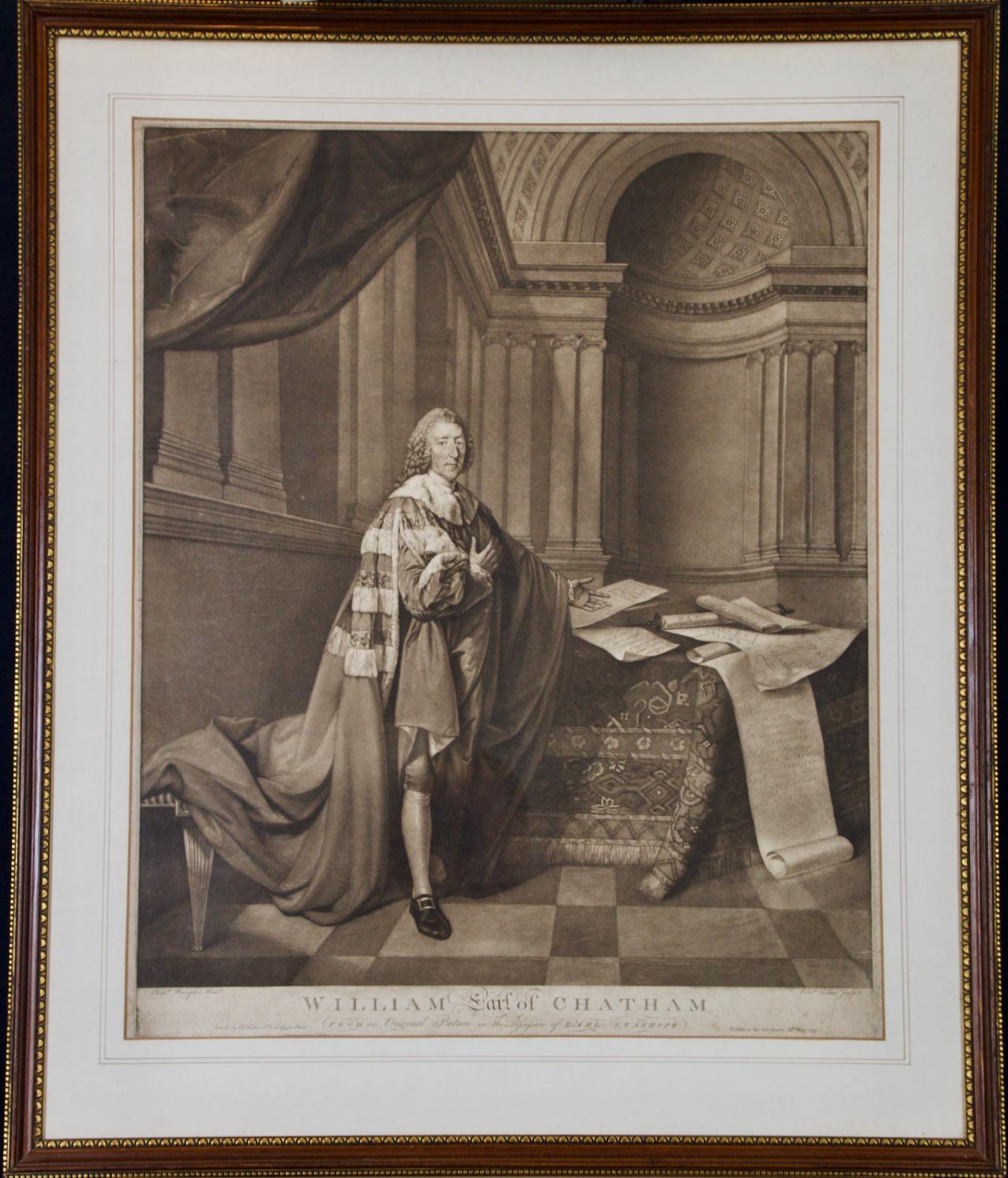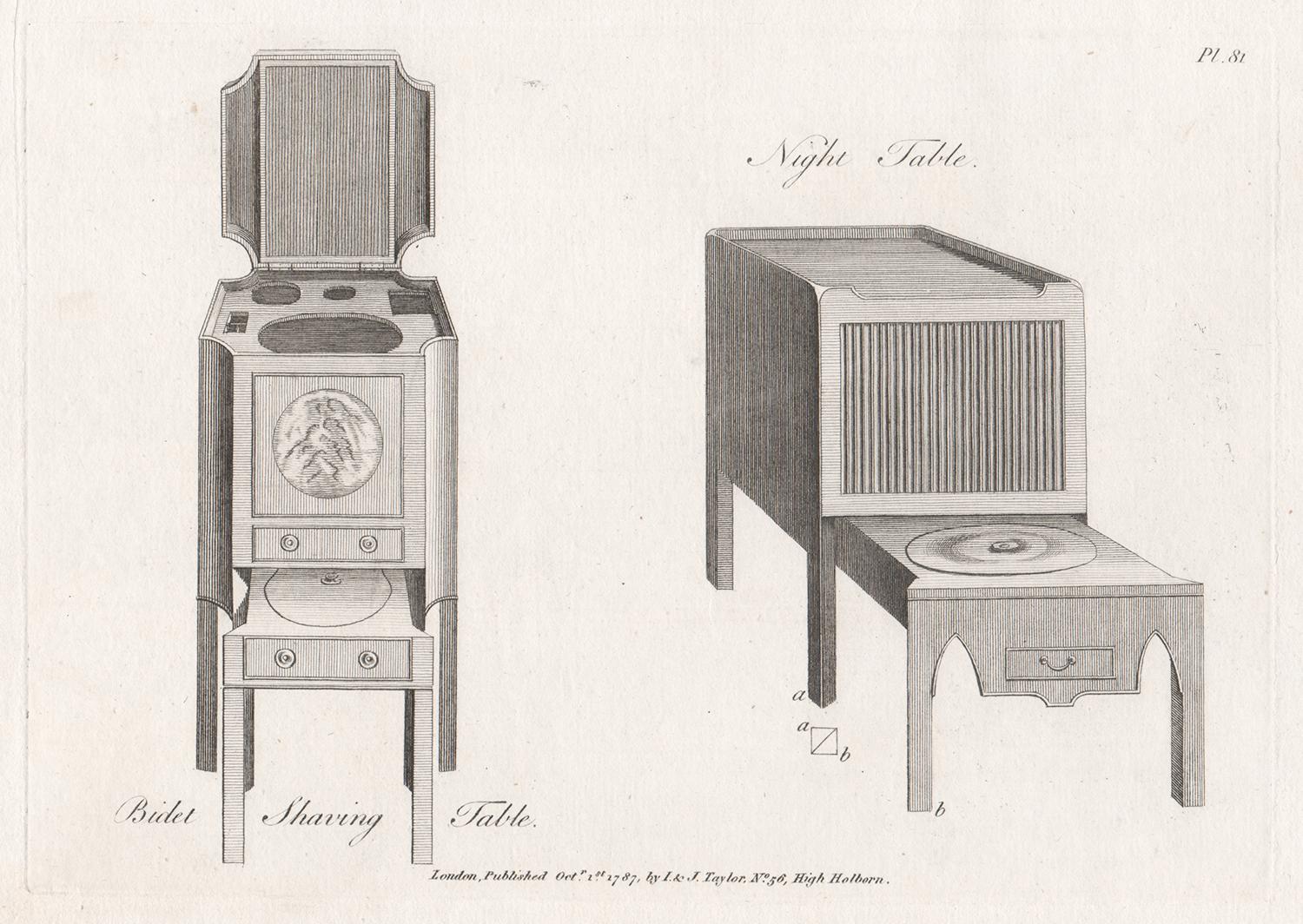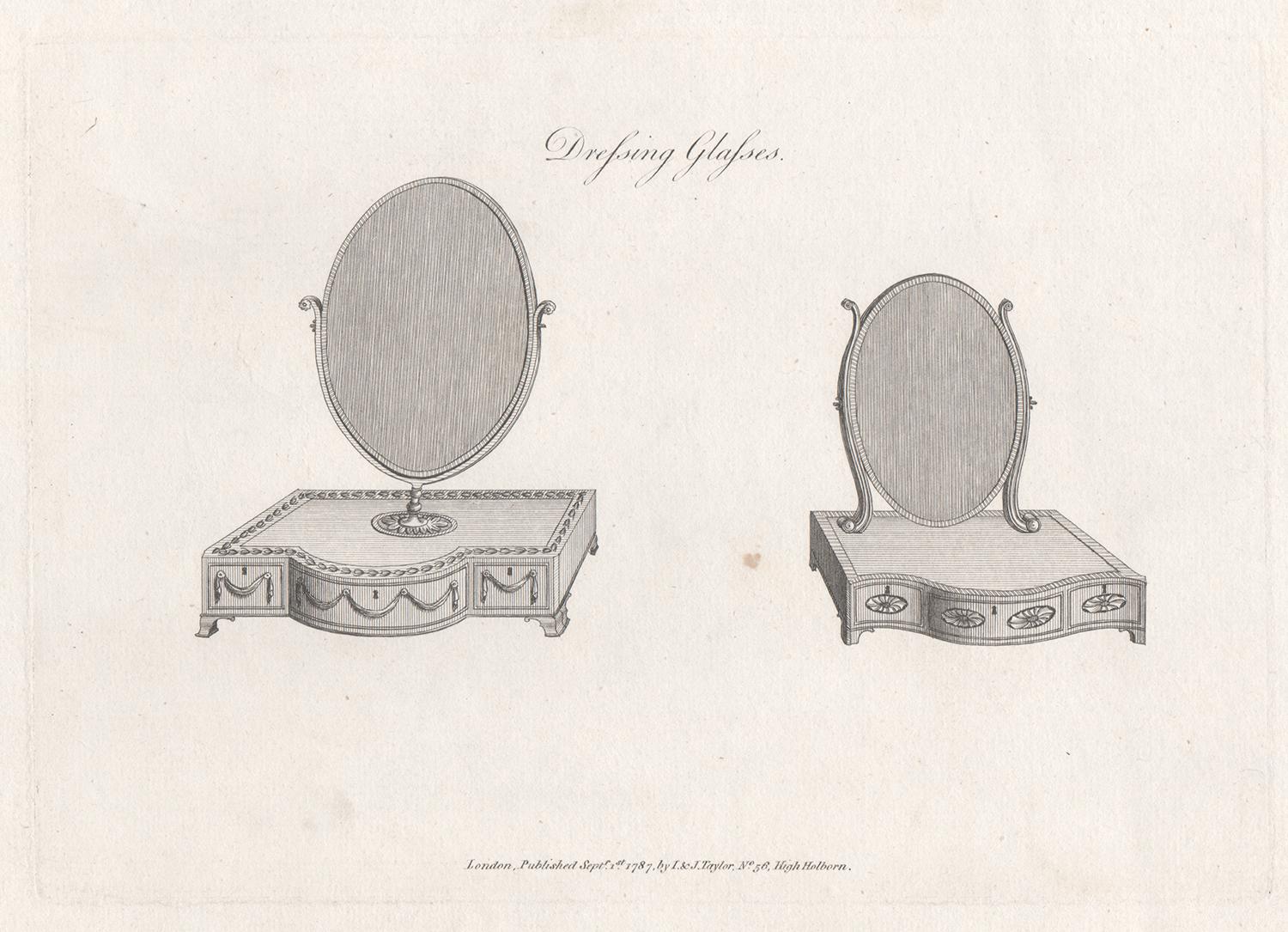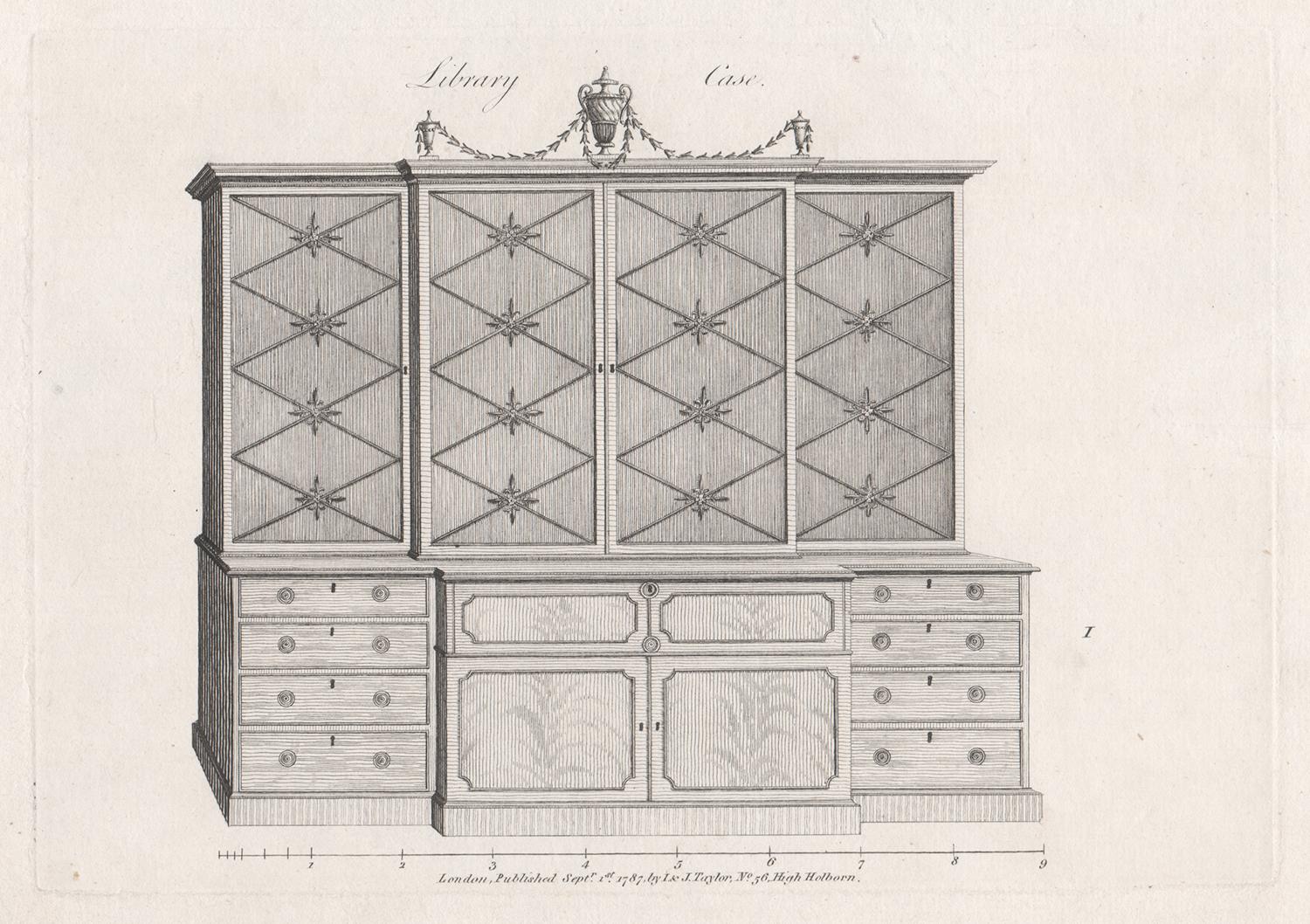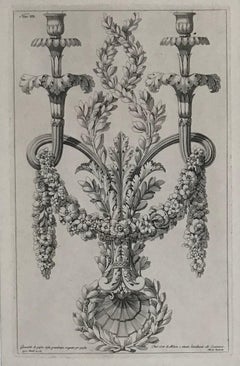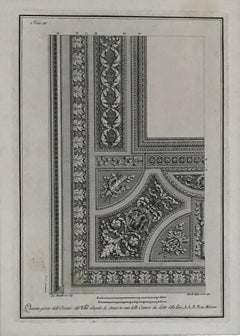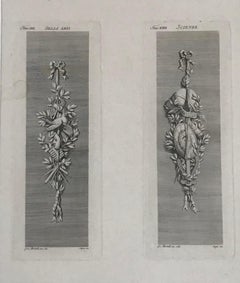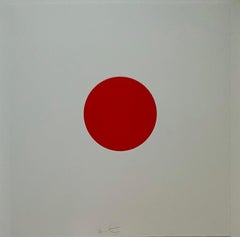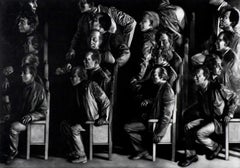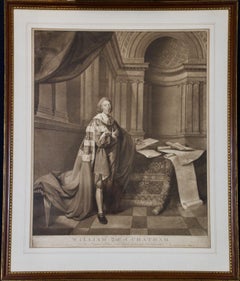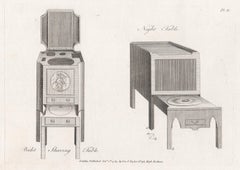Items Similar to Architectural designs. A set of nine architectural engravings.
Want more images or videos?
Request additional images or videos from the seller
1 of 22
Albertolli GiacondoArchitectural designs. A set of nine architectural engravings.1782
1782
About the Item
Architectural designs. A set of nine architectural engravings.
These engravings are framed in white gold covered french frames.
From the publication published in Milan in 1782.
"Different ornaments, invented, designed and executed by Giocondo Albertolli " (1742-1839) Swiss-Italian architect and decorator. Giocondo Albertolli became famous for the ornamental decorations he executed in the interiors of public and private buildings in Lombardy. It represented the neoclassical style born around 1770, which due to its reaction to the baroque and the rococo was inspired by the rather austere and linear forms of the ancient Greeks and Romans. Later he was a highly regarded teacher at the Academy of Fine Arts, in Milan (better known in the abbreviated form Brera), of which he was a co-founder.
- Creator:Albertolli Giacondo (1742 - 1839, Italian)
- Creation Year:1782
- Dimensions:Height: 15.75 in (40 cm)Width: 11.82 in (30 cm)
- Medium:
- Period:1780-1789
- Condition:
- Gallery Location:Paris, FR
- Reference Number:1stDibs: LU129225385831
About the Seller
5.0
Vetted Professional Seller
Every seller passes strict standards for authenticity and reliability
Established in 2015
1stDibs seller since 2019
35 sales on 1stDibs
- ShippingRetrieving quote...Shipping from: Paris, France
- Return Policy
Authenticity Guarantee
In the unlikely event there’s an issue with an item’s authenticity, contact us within 1 year for a full refund. DetailsMoney-Back Guarantee
If your item is not as described, is damaged in transit, or does not arrive, contact us within 7 days for a full refund. Details24-Hour Cancellation
You have a 24-hour grace period in which to reconsider your purchase, with no questions asked.Vetted Professional Sellers
Our world-class sellers must adhere to strict standards for service and quality, maintaining the integrity of our listings.Price-Match Guarantee
If you find that a seller listed the same item for a lower price elsewhere, we’ll match it.Trusted Global Delivery
Our best-in-class carrier network provides specialized shipping options worldwide, including custom delivery.More From This Seller
View AllChandelier designs. A pair of engravings
By Albertolli Giacondo
Located in Paris, FR
Chandelier designs. A pair of architectural engravings.
These engravings are framed in white gold covered french frames.
From the publication published in Milan in 1782.
"Different o...
Category
1780s Interior Prints
Materials
Engraving
Ceiling designs. A set of three architectural engravings.
By Albertolli Giacondo
Located in Paris, FR
Ceiling designs. A set of three architectural engravings.
These engravings are framed in white gold covered french frames.
From the publication publishe...
Category
1780s Interior Prints
Materials
Engraving
Allegory of the four seasons. Four engravings on two framed sheets.
By Albertolli Giacondo
Located in Paris, FR
Allegory of the four seasons. A pair of engravings.
These engravings are framed in white gold covered french frames.
From the publication published in Milan in 1782.
"Different ornam...
Category
1780s Interior Prints
Materials
Engraving
Rhodotorulic Acid. Woodcut in colors. Signed.
By Damien Hirst
Located in Paris, FR
HIRST Damien (1965 - )
Rhodotorulic Acid. Woodcut in colors. Signed.
Provenance : DTR Modern Gallery, New York.
About Damien Hirst (Artist)
British artist Damien Hirst is widely considered the enfant terrible of contemporary art. He is the most prominent of the so-called Young British Artists, or YBAs, a group, largely composed of Hirst’s classmates at Goldsmiths, in London, that began exhibiting together in warehouses and factories after 1988 and is known for the use of unconventional materials and “shock tactics.”
In the 1990s, Hirst said, “I can’t wait to get into a position to make really bad art and get away with it.” And indeed, he is notorious for piquing critics and baffling the public with such pieces as his signature glass vitrines containing dead sheep or sharks in formaldehyde, and his diamond-encrusted skull, For the Love of God.
Working primarily in sculpture, Hirst takes after French modernist master Marcel Duchamp in his use of ready-made objects and materials, which he combines to ironic effect. He often creates in series, as with The Cure (Violet) and The Cure (Turquoise), both from 2014, which are among several pill paintings...
Category
2010s Abstract Abstract Prints
Materials
Paper
'Tree of life'. Coloured lithograph. Signed, titled, dated and numbered EA 1/5
By Guillaume Cornelis van Beverloo (Corneille)
Located in Paris, FR
'Tree of life''. Coloured lithograph. Signed, titled, dated and numbered EA 1/5
This piece is accompanied with a certificate of authencity by the Corneille Foundation.
Corneille – G...
Category
1990s Other Art Style Figurative Prints
Materials
Lithograph
Grey House. Oil on canvas. Signed.
Located in Paris, FR
Raf Peeters is a Belgian artist represented by Boycott Gallery.
Category
Early 2000s Realist Landscape Paintings
Materials
Oil
You May Also Like
Profils Horizontaux (20 men seated in a church, a hall, union or political?)
By Maurice Pasternak
Located in New Orleans, LA
Viewers are always curious about this image. I count 20 people seated -- all men. Why? Three of the men are looking over their shoulders toward the back. Are they impatient to see late arrivers? The seating seems to be pew like. Pasternak, like most artists, wants the viewer to bring their own interpretation to the image and is most circumspect to give an explanation. A church, a union hall, a political meeting -- which is it? The mood seems to be one of anxiety rather than celebration.
The artist did answer why all men. He says that "he likes to create the tension of the image on the page. Putting women and men together...
Category
Late 20th Century Surrealist Figurative Prints
Materials
Mezzotint
Portrait of William Pitt, Earl of Chatham: Rare Framed Mezzotint after Brompton
By Edward Fisher
Located in Alamo, CA
This is a large framed very rare hand-colored copperplate mezzotint engraved portrait of William Pitt, the Elder, 1st Earl of Chatham by Edward Fisher, published in London in 1779 after a painting by Richard Brompton. Pitt is depicted attired in a flowing regal appearing cape, standing in an ornate room with his left hand outstretched over a serious of manuscripts and scrolls that are laying on a table or desk to his left. The table is covered by a beautiful oriental carpet. The manuscripts include the Magna Carta, a map of the colonies, including Long Island and Staten Island, and papers entitled "A Plan for the Reconciliation between Great Britain and the Colonies", "A Motion Made in 1775 for the Recall of Troops from Boston", "A Provisional Act for Settling the Troubles in America Offered to the House of Lords in 1775", and "It is doing Nothing to repeal a few Scraps of Paper or Pieces of Parchment called Acts of Parliament. But our Business is to repeal the Ill-Will and the Animosity unfortunately now subsisting between Great Britain and North America". This engraving is held by the British Museum and the British Royal Collection Trust.
This large framed mezzotint engraving is presented in a brown wood frame with gold-colored beaded inner and outer trim, and a cream-colored French mat. The frame measures 31.63" high by 26.63" wide by 0.75" deep. There are three short tears along the right edge and mild creasing in the left upper, left lower and right lower corners. It is otherwise in very good condition.
William Pitt (1708-1778) was a member of the British parliament from 1735 to 1761 and prime minister from 1766 to 1768. Pitt was an advocate for the American colonies leading up to the War of Independence. He called for an amiable relationship between Great Britain and the colonies and opposed the Stamp Act and military action in America. He advocated for a withdrawal of English troops from Boston in 1775 and the settling of troubles in America, as two of his manuscripts on the table outline. Pitt's colleague, Lord Shelburne (later the Marquess of Lansdowne) shared his sympathies and after Pitt's death, signed a peace treaty with the United States in 1782.
The American city of Pittsburgh, Pennsylvania is named for William Pitt, the Elder. The name originated when the conflict between the British and French over territorial claims in the Northeast were settled in 1758. General John Forbes and his British army, supported by the American colonial troops, expelled the French from Fort Duquesne (which had been constructed by the French in 1754). Forbes re-named the site for William Pitt the Elder, who at the time was a British statesman. The earliest known reference to the new name, Pittsburgh, is in a letter sent from General John Forbes to Pitt, dated November 27, 1758. Pitt's son, William Pitt, the Younger, like his father, also served as British Prime Minister.
Edward Fisher (1730-1785) was born in Ireland in 1730. He was originally a hatter, but learned engraving in London. He became a member of the Incorporated Society of Artists in 1766, and exhibited there fourteen times between 1761 and 1776. He engraved more than sixty portraits. In addition to this portrait of William Pitt, Earl of Chatham, after Richard Brompton he engraved several portraits after Brompton, including George, Earl of Albemarle, as well as engraved portraits after paintings by Joshua Reynolds, including the Shakespearean actor David Garrick, Hugh, Earl of Northumberland, and Elizabeth, Countess of Northumberland and Laurence Sterne, and Hope Nursing Love, as well as Robert Brown, after Mason Chamberlin, Colley Cibber, after Jean-Baptiste van Loo, Christian VII of Denmark, after Nathaniel Dance, Simon, Earl Harcourt, after Hunter, Roger Long, after Benjamin Wilson...
Category
Late 18th Century Old Masters Portrait Prints
Materials
Mezzotint
In a tavern. Paper, engraving, 21x25 cm
By Adriaen van Ostade
Located in Riga, LV
In a tavern.
engraver Jan De Visscher (1933-1692)
Paper, engraving, 21x25 cm
Category
17th Century Realist Figurative Prints
Materials
Paper, Engraving
$1,327 Sale Price
20% Off
Bidet Shaving and Night Tables, Hepplewhite Georgian furniture design engraving
Located in Melbourne, Victoria
'Bidet Shaving Table and Night Table'
From George Hepplewhite's 'Cabinet-Maker and Upholsterer's Guide', published by I. and J. Taylor in 1788. These en...
Category
Late 18th Century English School Interior Prints
Materials
Engraving
Dressing Glasses, Hepplewhite English Georgian furniture design engraving
Located in Melbourne, Victoria
'Dressing Glasses'
From George Hepplewhite's 'Cabinet-Maker and Upholsterer's Guide', published by I. and J. Taylor in 1788. These engravings are the o...
Category
Late 18th Century English School Interior Prints
Materials
Engraving
Library Case, Hepplewhite English Georgian furniture design engraving
Located in Melbourne, Victoria
'Library Case'
From George Hepplewhite's 'Cabinet-Maker and Upholsterer's Guide', published by I. and J. Taylor in 1788. These engravings are the only evidence of Hepplewhite's styl...
Category
Late 18th Century English School Interior Prints
Materials
Engraving
